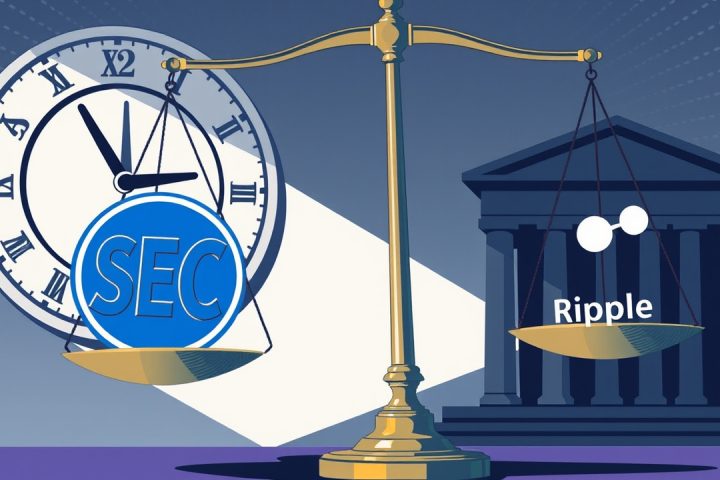Statement Summary
The SEC has approved a new rule allowing exchanges to adopt generic listing standards for exchange-traded products (ETPs) that hold commodities, including digital assets, without the need for prior Commission review. This decision accelerates the market entry of these products, raising concerns about investor protections due to the novelty and risk associated with digital assets. Unlike traditional ETFs, which are subject to stricter regulations under the Investment Company Act, ETPs operate under less oversight, potentially misleading investors about the risks involved. The approval could blur the distinctions between ETPs and ETFs, complicating investor understanding and protection. Critics argue that such fast-tracking of untested products may expose investors to unnecessary risk, emphasizing the need for thorough Commission scrutiny to safeguard investor interests.
Original Statement
Today the Securities and Exchange Commission approved proposed rule changes that will allow Exchanges to adopt generic listing standards for certain qualifying exchange traded products (“ETPs”) that physically hold commodities like precious metals, or more notably, digital assets. As a result, such digital asset products will be permitted to list and trade on exchange without being subject to Commission review. In other words, the Commission is passing the buck on reviewing these proposals and making the required investor protection findings, in favor of fast tracking these new and arguably unproven products to market.
Introduction and Regulatory Framework
ETPs include a wide array of products that invest in a range of financial assets, and an ETP issuer must register their securities under the Securities Act of 1933 (“33 Act”). Generally, exchange proposals to list and trade ETPs are subject to individual approval by the Commission. The Commission must find that such proposals are consistent with the Securities Exchange Act of 1934 (“34 Act”) in order to approve them, which requires that the proposed rules be designed to “prevent fraudulent and manipulative acts and practices” and “protect investors and the public interest.
In today’s Approval Order, the Commission relies in part on Rule 19b-4(e) to approve the proposed rule changes. In short, this rule effectively allows an exchange to list and trade a new derivative securities product if the Commission has approved the exchange’s rules for that product class. The Commission states that the proposals fulfill the rule’s objective by permitting ETPs that satisfy the proposed generic listing standards to commence trading without public comment and Commission approval, and, as the order goes on to explain, this will reduce the timeframe for bringing the ETPs to market. While I acknowledge that streamlined filing procedures may be appropriate for certain investment products, I do not think streamlined filing procedures are appropriate for products as nascent and untested as digital asset ETPs.
Novelty of Digital Asset ETPs
First, the fact that digital asset ETPs are so new distinguishes them from other products for which the Commission has approved generic listing standards in the past. For example, while the Commission approved American Stock Exchange (“Amex”) rules in 1992 to provide for the listing and trading of specific Portfolio Depositary Receipts (“PDRs”), the Commission did not approve Amex’s generic listing standards applicable to PDRs generally until eight years later in the year 2000. Similarly, when the Commission approved generic listing standards for exchange-traded fund shares (“ETFs”) in 2020, in reliance on Rule 6c-11 under the Investment Company Act of 1940 (“40 Act”), the order stated that that Rule reflected “more than two decades of experience” with those investment products.
In contrast to the long track record of experience behind PDRs and ETFs, the Commission approved the first spot digital asset ETP for listing and trading only last year. While today’s Approval Order challenges the assertion that ETPs holding digital assets are novel, stating that the Commission has been engaged with digital asset products since 2013, this leaves out the fact that from 2018 through March 2023, the Commission disapproved more than 20 exchange rule filings for spot bitcoin ETPs. I think it is appropriate to point out that there is a difference between positive and negative engagement with an investment product, and the record of disapprovals here speaks for itself. In addition, even when the path for approving generic listing standards is long and well-trodden, as it was for ETFs, generic listing can pose cause for concern and open the door to unanticipated, novel products—as was the case with single stock ETFs. This illustrates the importance of approaching the implementation of generic listing standards with caution and without hurry. Otherwise, we risk unintended consequences that are exceedingly difficult to unwind once we have removed the possibility of meaningful Commission review.
Further Erosion of the Distinction between ETPs and ETFs
Second, today’s Approval Order further erodes the distinction between 33 Act ETPs and 40 Act ETFs—a distinction that is already on shaky ground given that market participants often incorrectly use the term “ETF” to refer to both products. In short: while all ETFs are ETPs, not all ETPs are ETFs. Conflating these two products is legally incorrect and practically dangerous for investors. I previously stated my concern that there will be confusion about what exactly ETPs are and that investors may infer they have protections in this product category that do not in fact exist. To be clear, these ETPs are not 40 Act ETFs that today are used by millions of American investors—despite the fact that some of these products may have “ETF” in their name.
While some of the mechanics underlying how these products operate are similar, it’s important to understand that each is governed by a distinct legal framework that provides different levels of investor protection. The distinctions are significant. For example, 40 Act ETFs must register with the SEC, and they offer protections related to conflicts of interest (including oversight by a board of directors with independence requirements), custody, and fees. The Division of Investment Management also carefully reviews their registration statements and provides comments on their disclosure. Additionally, the Commission’s Division of Examinations has the authority to conduct examinations of these funds and their advisers—with or without cause. In contrast, 33 Act ETPs have less oversight since their sponsors are not subject to the oversight of an independent board or the other protections of the 40 Act.
If this seems complicated, it is, and the proposal piles on with more confusion and conflation in the form of its eligibility criteria for generically listing these products. Specifically, the proposal provides the option to bootstrap an ETP listing off of an ETF that is already listed—even though ETFs become effective automatically in some circumstances, meaning they do not require express Commission or staff approval. This particular criterion applies only on “an initial basis”, which presents some challenging questions—for example, what happens if the Fund Manager of the ETF decides to delist, or to make strategy changes post-launch that would cause the ETP to no longer meet the original eligibility requirement?
If you read carefully, the Approval Order acknowledges the distinction between 33 Act ETPs and 40 Act ETFs in a footnote, stating that although ETPs are not investment companies under the 40 Act, or subject to the rules and regulations thereunder, the Trusts would be required by the generic listing standards to comply with certain requirements “similar” to those applicable to ETFs. For example, the ETPs will have disclosure requirements with respect to the Trusts’ holdings and valuation metrics similar to those required under Rule 6c-11. However, requiring similar disclosure requirements does not miraculously confer all the investor protections of the 40 Act upon 33 Act ETPs. In fact, investors will have access to an investment product that strongly resembles an ETF without having the same underlying investor protections. Given all of the conflation already, we should not exacerbate the confusion between ETFs and non-40 Act ETPs with this bootstrap criterion that just entangles them further.
Unique Risks of Digital Asset ETPs
Another reason I do not believe generic listing standards are appropriate for digital asset ETPs at this time is due to the unique risks that still exist in the underlying crypto spot markets. I have discussed at length how a fund holding a volatile asset could itself be volatile. In addition, one need only look at the risk factors enumerated in the Form S-1 registration statements for digital asset ETPs to get a sense of the full slate of potential risks, including increased risk of loss and risks associated with the spot market not having comparable guardrails to those that exist in regulated securities markets. I agree with the view voiced by a commenter that these do not sound like investment products for which the Commission’s principal concern should be to reduce the timeframe for bringing them to market—rather, they sound like products that necessitate full and careful Commission review.
Our mission, after all, is to protect investors—not to fast-track untested investment products for listing and trading on exchange.




